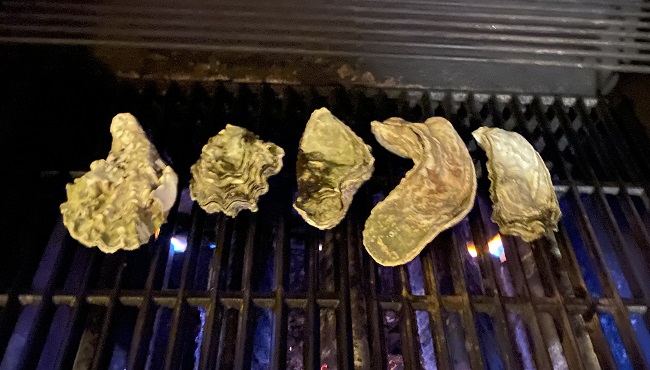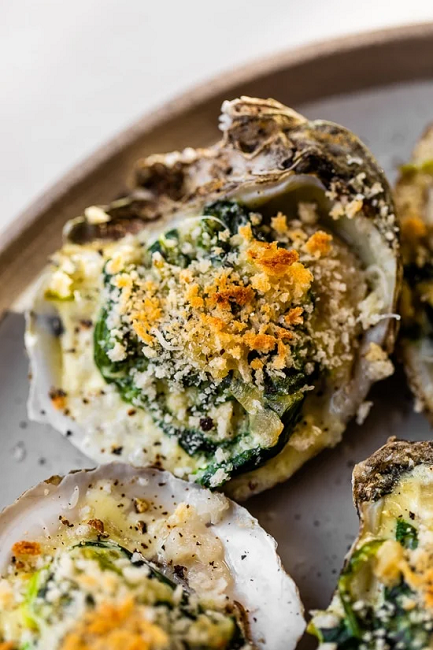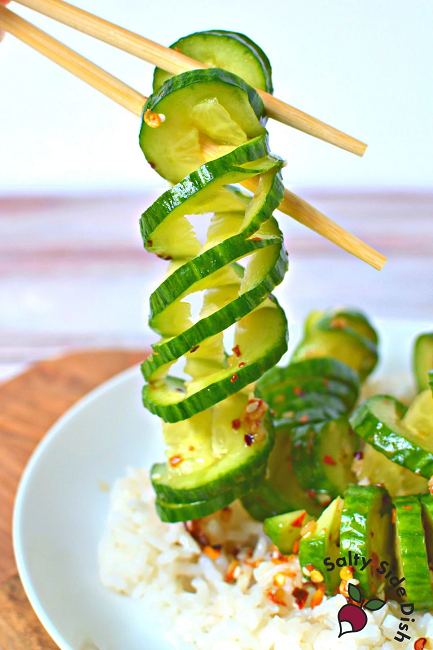You love them or hate them.
As a longtime resident of North Carolina, I’ve been around these mollusks a long time, but wasn’t a big fan because most of the time they were being served raw. Oh, and they were usually not chewed.
Yeach!
Fried? Occasionally, sure.
But after experiencing barbequed oysters hot-off the grill, with garlic butter bathing a tender, juicy, cooked, chewable morsel – I was hooked. Being at my daughter’s house on the lanai, gazing at the Hawaiian sunset didn’t hurt either.
A few Oysters Rockefeller in Colonial Williamsburg, Virginia, consumed after experiencing the Grand Illuminations sealed the deal.
If they are cooked, I’m game.
The Asian Cucumber Twists that inspired last week’s post, represented the salad/vegetable portion of our oyster feast – thanks to my sweetheart’s daughter, who is in the business of selling and delivering Gulf oysters to restaurants in Atlanta, Georgia.
The Gulf oysters she shared with us are huge! We enjoyed a couple oyster feasts during her recent visit, and we appreciated all her hard work in shucking them for us, too!
Her baked oysters were phenomenal using a small dab of butter, garlic salt, lemon juice, parmesan, and cheddar.
Oh, my!
Turns out, oysters have some excellent nutritional value – above and beyond the lore around enhancing sexual prowess.
One 3-ounce serving of oysters, approximately 6 medium, is incredibly low in calories and carbs, and is high in protein and vitamin/minerals. Check this out:
- Calories: 69
- Fat: 2g
- Sodium: 90mg
- Carbohydrates: 4.2g
- Fiber: 0g
- Protein: 8g
But the numbers that really caught my eye were from the USDA website below.
| Vitamin C | 5% | Calcium | 5% |
| Iron | 33% | Vitamin D | 0% |
| Vitamin B6 | 5% | Cobalamin | 230% |
| Magnesium | 12% |
Cobalamin is vitamin B12 and essential for maintaining brain and nerve health – and for making DNA and red blood cells. B12 also helps lower levels of an amino acid linked (when in high levels) to dementia, heart disease, stroke, and osteoporosis.
To summarize, a 3-ounce serving of oysters has:
- Very few carbohydrates
- Less fat than carbohydrates
- Is packed with protein and essential amino acids (Omega-3 fatty acids)
- Very high in vitamins including B12
- Very high in minerals including potassium, zinc, magnesium, iron and is low in calories
The caution about oysters is usually centered around eating them raw because they may contain a Vibrio bacterium which may cause diarrhea, vomiting, and in some cases, severe illness. Cooking them with proper techniques can kill harmful bacteria.
Also, because of advanced techniques in refrigeration and storage, the adage about not eating oysters in a month without an ‘R’ has gone by the wayside. Oysters are now safely consumed year-round.
There are six oysters left we are planning to put on the grill tonight. Hope I learned enough about how to shuck an oyster from watching others.
We’re on our own tonight!
In health –
Deidre











